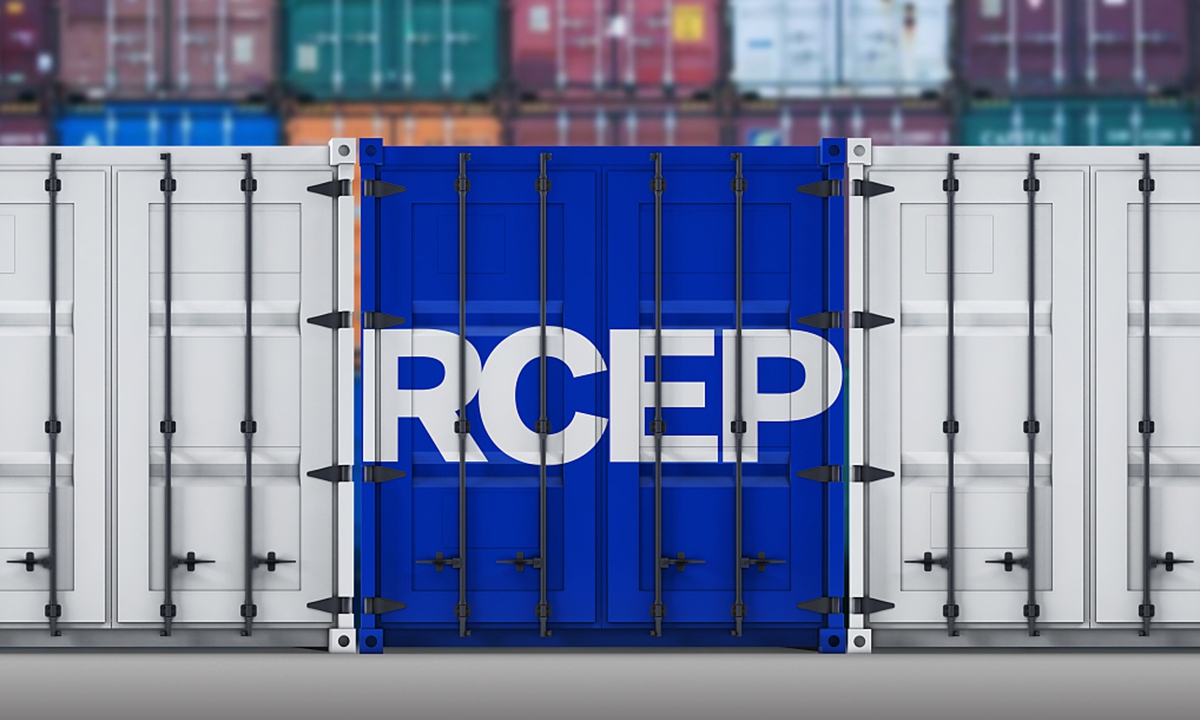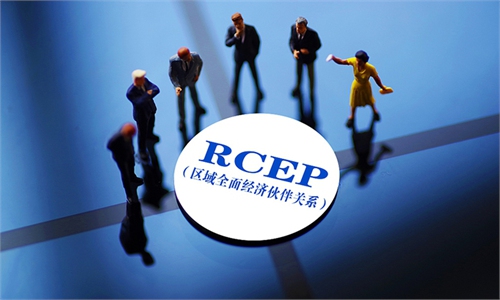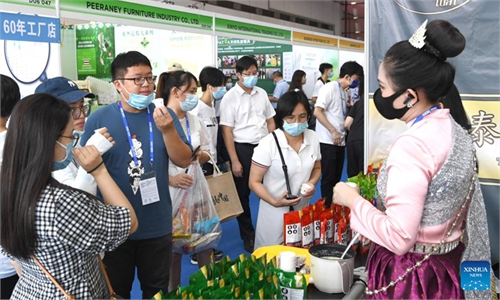
RCEP Photo:VCG
With a boost from the Regional Comprehensive Economic Partnership (RCEP) and the Belt and Road Initiative (BRI), East China's Fujian Province saw rapid growth of investment from overseas in the first three quarters of the year, the local commerce department revealed on Saturday.
Fujian's actual use of foreign capital totaled $4.49 billion from January to September, up 23 percent year-on-year. Investment from RCEP members rose by 65.6 percent, that from ASEAN increased by 156.1 percent, and that from countries and regions under the BRI framework surged 184.5 percent, according to data released by the provincial commerce department through its official WeChat account.
Multiple cities have stepped up efforts to establish RCEP cooperation demonstration zones to boost trading and investment exchanges with RCEP partners, including Nanning in South China's Guangxi Zhuang Autonomous Region, Jiangmen in South China's Guangdong Province and Ningbo in East China's Zhejiang Province.
A China-South Korea industrial park project has chosen to locate in Nanning, with five production lines operating so far, local news outlets reported on Sunday. In the first seven months, Guangxi's actual use of foreign capital from RCEP members came in at $48.6 million, surging 348 percent year-on-year.
In addition to increasingly close investment cooperation, many Chinese cities and provinces have seen vigorous trade exchanges with other RCEP members since the mega free trade deal came into effect at the beginning of the year.
For instance, trade between Central China's Henan Province and other RCEP members totaled 180.43 billion yuan ($24.88 billion) in the first nine months, up 20.5 percent year-on-year, faster than the province's overall foreign trade growth rate of 12.1 percent in the period.
Guangxi recorded 200.2 billion yuan in trade with other RCEP members from January to September, accounting for nearly half of the region's foreign trade.
ASEAN has become Guangxi's largest trading partner. With the RCEP taking effect, Guangxi saw its trade grow by 470 percent with Brunei in the first nine months, with gains of 94 percent with Myanmar, 99.6 percent with the Philippines and 55 percent with Singapore.
Guangxi also recorded rapid growth of trade with other RCEP members. For example, its exports to Japan and South Korea surged 95.1 percent and 80.4 percent, respectively, in the first nine months.
According to customs in Hefei, East China's Anhui Province, a total of 5,238 certificates of RCEP origin were issued in the first three quarters, involving goods worth 2.58 billion yuan, which were expected to reduce tariffs of 90.25 million yuan for enterprises in the province.
Both the RCEP deal and the BRI have brought tangible benefits to all economies, which is especially valuable against the backdrop of the global economy being battered by the COVID-19 pandemic and geopolitical conflicts, experts said.
China has unswervingly promoted the high-quality opening-up of its market, which has made it one of the top choices for global investors, Dong Dengxin, director of the Finance and Securities Institute of the Wuhan University of Science and Technology, told the Global Times on Sunday.
The increasingly close cooperation between China and other RCEP members and its BRI partners has created a great demonstration effect to other economies in the post-COVID era, Dong noted.
Global Times



